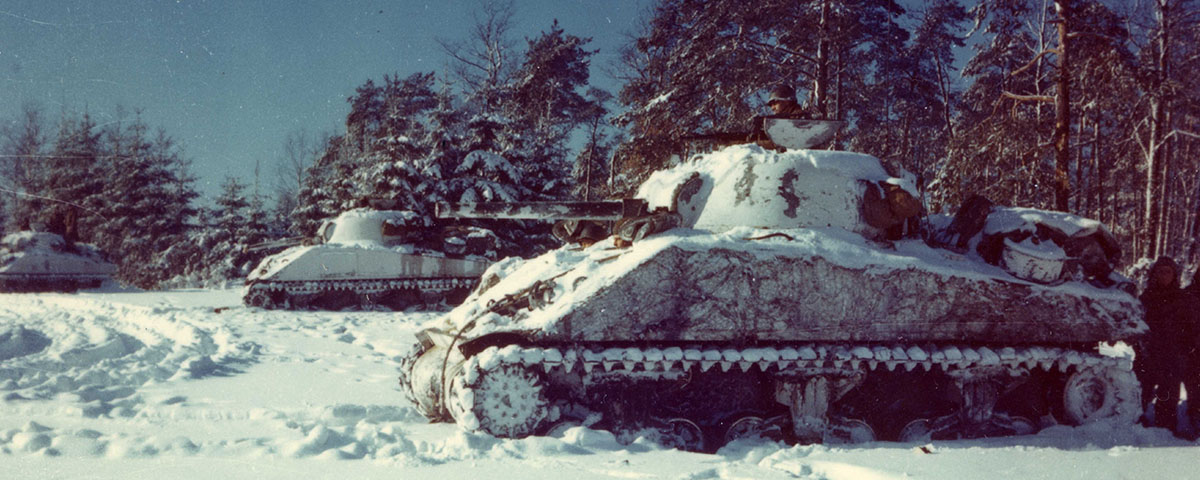Led most lethal tank attack
Capt. Michael Wittmann, German, World War II
Credited with destroying 138 tanks, 132 antitank guns, and uncounted other vehicles on the Russian front and at Normandy, SS-Hauptsturmführer Wittmann is best known for his rampage against the British 7th Armored Division outside Villers-Bocage in June 1944, devastating as many as 14 tanks, 2 antitank guns, and 15 other vehicles in 15 minutes. He was finally cornered and killed in his Tiger I tank by five British or Canadian Shermans on August 8, 1944.
Top tank commander in modern history
Lt. Zwi Greengold, Israeli, Yom Kippur War
During the Battle of Golan Heights in 1973, “Zwicka” Greengold of the 188th “Barak” (Lightning) Brigade organized a small scratch force that prevented two large Syrian armored formations from breaking through Israeli lines. Commanding from a series of a half dozen Centurion tanks as each was knocked out, Greengold fought for 20 hours, destroying between 20 and 40 Syrian vehicles before dropping to the ground, wounded, burned, and exhausted, with the words, “I can’t anymore.” He was awarded the Itur HaGvura, Israel’s highest medal of valor.
World War II’s top tank strategist
Marshal Georgy Zhukov, Russian
Zhukov made his mark using tanks to flank and annihilate the Japanese 23rd Division at Khalkin Gol in August 1939, as Japan attempted to expand its control from occupied Manchuria into Soviet Mongolia. He went on to integrate armor into the Red Army and win the war’s greatest land campaigns, including Moscow (1941), Stalingrad (1942), Kursk (1943), lifting the siege of Leningrad (1944), Operation Bagration (1944), and taking Berlin (1945).
Top tank ace in history
Sgt. Kurt Knispel, German, World War II
Advancing from loader to gunner to commander in Panzer IVs, Tigers, and Tiger IIs on the Russian front and in Normandy, Hungary, and Moravia, Knispel was officially credited with 168 Allied tanks destroyed—including a T-34 hit at almost two miles away—more tanks than any other tanker ever. He was killed in action on April 28, 1945, at age 23, just days before Germany surrendered.
Invented modern armored combined-arms doctrine
Lt. Gen. John Monash, Australian, World War I
As commander of Australian Corps, Monash deftly integrated well-coordinated artillery barrages, armor of the British 5th Tank Brigade, airplanes (for close support and to transport supplies to his front-line forces), and a reinforcing complement of American troops to take the French village of Le Hamel on July 4, 1918, in a surprising setback to the advancing Germans.
Father of armored blitzkrieg
Gen. Heinz Guderian, German, World War II
Putting Monash’s combined-arms mechanized tactics and postwar theory into high-speed practice, Guderian synthesized the blitzkrieg strategy that helped Germany overrun Poland in 1939. At the Meuse River in 1940 he ignored orders to halt and thrust deep into France. Ironically, following victories in Russia, he lost his field command after prudently retreating before the Soviet counterattack outside Moscow in 1941.
Superb field commander of armored forces
Maj. Gen. Stanislaw Maczek, Polish, World War II
Maczek was the only Allied commander to lead armored units from the start of the war—in Poland in 1939—to the end. Among other feats, in 1944 he commanded the Polish 1st Armored Division of II Canadian Corps that played a key role in closing the Falaise Pocket at Chambois. He topped off his distinguished career by capturing Wilhelmshaven in May 1945.
Top U.S. tank commander in the war
Lt. Col. Creighton Abrams, American, World War II
I’m supposed to be the best tank commander in the Army,” Patton once said, “but I have one peer—Abe Abrams.” Leading the 37th Tank Battalion from the front, Abrams and the crew of his own M4 Sherman tank, Thunderbolt, are estimated to have destroyed about 50 German armored fighting vehicles.





